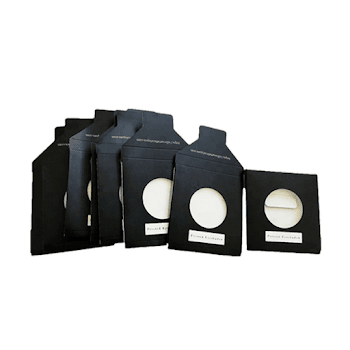Packaging for hemp flowers is a problem, but these new ideas may help to solve it.
Hemp flower packaging is an excellent choice for flower packaging. The new industry has enormous potential to change the way we think about healthcare and business in general. However, there is one aspect of the cannabis market that we would prefer not to discuss. There's a pile of it under my desk right now, and more in a bag under the kitchen sink. What is this horrible, unlucky truth? Plastic.
According to my calculations, I am personally responsible for at least 200 pounds of plastic entering the waste stream based on my projected cbd flower packaging intake since Oregon's legalization. It's simply a result of my smoking habits. Consider retail: a typical budtender fills hundreds of containers per week, one for each transaction. A metric ton of plastic can be made with only 5,000 child-resistant pop-top containers for an eighth of a hemp flower packaging, which can hold up to 184 g of plastic. We're transforming legal cannabis into yet another high-volume source of virgin plastic and landfill waste, despite the fact that it was supposed to be a therapeutic, paradigm-shifting miracle.
It's fine if you're currently struggling with a calculator to figure out how much plastic your pipe is responsible for. This is a serious, current issue that must be addressed right away. But, if we truly want to make a difference, we must accept the fact that neither consumers nor businesses will be able to abandon plastic overnight. We need to take decisive action to get off this perilous path we're on. According to SirePrinting, a cbd flowers packaging supplier, it all starts with changing the way we think about plastic in general.
"Legal cannabis is supposed to be a paradigm-shifting, healing miracle, but we're turning it into yet another high-volume avenue for virgin plastic and landfill waste."
Yes, this forward-thinking, environmentally conscious business manufactures...plastic containers. Their plastic, on the other hand, is made with just enough additive in the substance to hasten decomposition without rendering it unrecyclable at a typical plant. Recycling is the first and most important step. If it does end up in a landfill, however, the additional chemical attracts bacteria, causing the plastic to degrade faster than its normal 450-year lifespan.
Truly Green has a team of mad scientists feeding bacteria glucose to manufacture 100 percent biodegradable, no-filler-needed plastic, while SirePrinting uses hemp plastic and salvaged ocean plastic in their products. According to his comments at last year's Cannabis Sustainability Symposium, the CEO of SirePrinting swears his company's biodegradable and compostable hemp plastic containers are technically edible.
The materials themselves are only one of the ways we can reduce this industry's environmental costs. Instead of the standard cylindrical prescription pill containers found in most markets, SirePrinting designed square-edged containers. The square design makes it easier to stack and ship; you can fit more containers in one cargo, resulting in fewer shipments and a lower carbon footprint. The company's manufacturing process employs a cheap custom boxes procedure to determine the exact amount of plastic required to manufacture each item, resulting in less waste than the traditional method of cutting forms out of large sheets (think cookie cutter). When it comes to the plastic problem in cannabis, it's not just about the plastic itself; it's also about how we consume, transport, and dispose of it.




Comments
Post a Comment